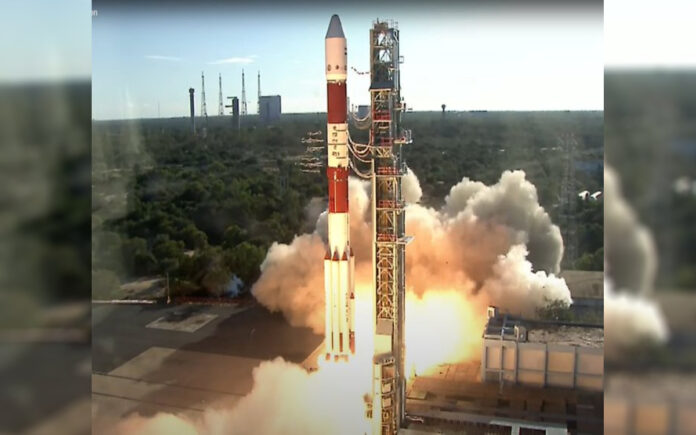Bengaluru: The PSLV-C59/PROBA-3 mission has successfully met its objectives, deploying the European Space Agency’s (ESA) satellites into their designated orbit with precision, the Indian Space Research Organisation (ISRO) announced on Thursday.
ISRO credited this milestone to the collaborative efforts of NewSpace India Limited (NSIL), ISRO, and ESA teams. “This achievement highlights India’s critical role in enabling global space innovation,” ISRO stated.
The mission, launched earlier today from Sriharikota, Andhra Pradesh, used the Polar Satellite Launch Vehicle (PSLV)-C59 to place the Proba-3 spacecraft into a highly elliptical orbit. This launch was part of a commercial initiative led by NSIL.
Delayed Launch Due to Technical Anomaly
Originally scheduled for Wednesday, the launch faced a brief postponement due to an anomaly detected in the PROBA-3 spacecraft. However, ISRO swiftly addressed the issue, ensuring the mission’s success.
Proba-3: A Milestone in Space Technology
Proba-3, a technology demonstration mission by ESA, is the agency’s first precision formation-flying project. The mission comprises two satellites flying together in a synchronized configuration, simulating a single large rigid structure in space.
ESA stated that Proba-3 would demonstrate formation flying in the context of a large-scale scientific experiment. The satellites will create a 150-meter-long solar coronagraph to observe the Sun’s faint corona closer to the solar rim than ever before.
Beyond its scientific objectives, the mission aims to establish benchmarks in precise positioning between spacecraft. It incorporates advanced metrology sensors, control algorithms, and new technologies to achieve this.
Orbital Laboratory and Formation Flying
Proba-3 will function as an orbital laboratory, conducting experiments in acquisition, rendezvous, proximity operations, and formation flying. The two satellites will maintain a fixed 150-meter alignment in space. The Occulter Spacecraft (OSC) will block the Sun’s disk, enabling the Coronagraph Spacecraft (CSC) to capture uninterrupted views of the faint solar corona.
Also Read | Foreign Ministers of Syria, Iraq, and Iran to Convene on Syria Crisis
This groundbreaking alignment technique will offer unprecedented insights into solar phenomena, serving as a foundation for future innovations in space exploration and scientific missions.
PSLV: India’s Reliable Space Workhorse
The Polar Satellite Launch Vehicle, India’s first launch vehicle with liquid stages, continues to play a pivotal role in deploying satellites and payloads for ISRO’s missions. First successfully launched in October 1994, the PSLV has become a trusted carrier for both domestic and international payloads.
The PSLV-C59 mission involves a four-stage rocket carrying a total payload mass of approximately 320 tonnes, demonstrating the robustness and reliability of India’s space infrastructure.



